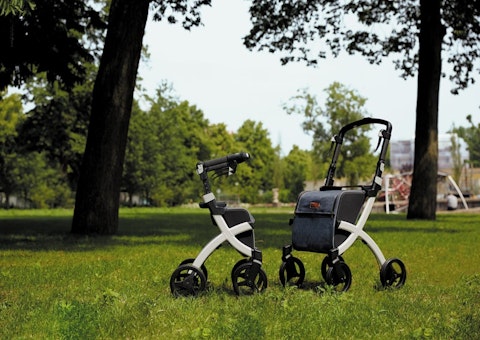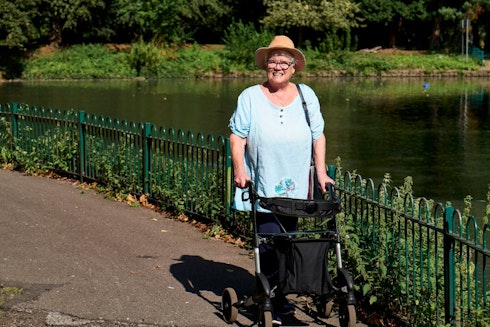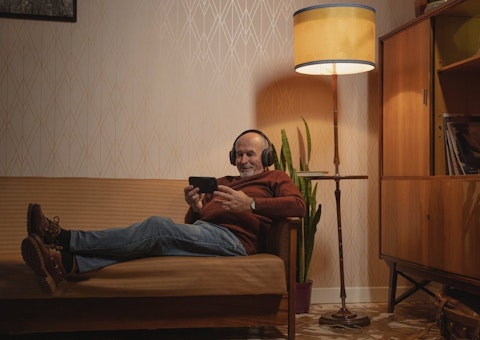The world of daily living aids is constantly evolving, aiming to empower individuals of all abilities to live life to the fullest. From innovative tech integrations to personalised solutions, exciting trends are shaping the future of how we approach daily tasks. Today, we'll delve into some of these trends and explore how they might impact your life.
- Personalisation Takes Centre Stage: In the evolving landscape of assistive technology, personalisation is becoming a cornerstone of innovation. Unlike the past, when assistive devices followed a generic, one-size-fits-all approach, today's solutions are crafted with individual needs and preferences in mind. For example, voice-controlled interfaces now offer adaptive speech recognition that can learn and adjust to various accents, speech patterns, and even emotional tones. Similarly, smart home devices are equipped with machine learning algorithms that observe and analyse daily routines, allowing them to anticipate needs and automate tasks more effectively. At Better Independent Living, we embrace this trend by offering an extensive selection of personalised daily living aids. Whether it's a smart home system that customises its behaviour based on your unique lifestyle or a specialised mobility aid tailored to your physical needs, we ensure that every product is designed with the user in mind.
- Artificial Intelligence Steps Up: The integration of artificial intelligence into assistive technologies is transforming how we interact with devices and manage daily activities. AI advancements have led to more intuitive and efficient tools. Speech recognition systems, for instance, have evolved from basic command recognition to sophisticated systems that understand context and nuances in conversation. This means users can engage in more natural and fluid interactions. Additionally, AI-powered robots are becoming increasingly adept at providing mobility assistance, such as navigating obstacles and adapting to user preferences. Predictive text tools, enhanced by AI, help those with speech limitations communicate more effectively by anticipating their words and phrases. This technological leap not only improves functionality but also enhances user independence and ease of use.
- The Rise of Wearable Tech: Wearable technology has advanced far beyond simple fitness trackers. Today’s wearables encompass a range of devices that offer significant benefits for daily living. Smartwatches, for instance, now feature built-in health monitoring capabilities, including heart rate tracking, emergency alerts, and medication reminders. Haptic feedback wearables can provide discreet notifications or alerts through vibrations, which is particularly useful for individuals with hearing impairments. Sensor-based devices, like smart bands or rings, can monitor environmental conditions and provide warnings about potential hazards, such as a sudden drop in temperature or a potential fall risk. These wearables are designed to blend seamlessly into daily life, offering both convenience and enhanced safety.
- Smart Homes for Smart Living: The concept of smart homes is revolutionising how we interact with our living spaces. With the advent of smart technology, users can control various aspects of their home environment with ease. Voice-activated systems can adjust lighting, regulate temperature, and manage appliances without physical effort, which is particularly advantageous for individuals with mobility challenges. Additionally, smart home systems can integrate with medical alert devices, ensuring that help is always within reach. The convenience of managing household functions through a smartphone app or voice command not only enhances daily living but also contributes to a greater sense of independence and security.
- Accessibility for All: The principle of universal design is gaining momentum as a key future trend in assistive technology. This approach emphasises creating products and environments that are accessible and usable by people of all abilities, including those with disabilities. Universal design promotes inclusivity by integrating accessibility features into mainstream products rather than offering them as separate or specialised solutions. This shift encourages the development of technologies that seamlessly fit into everyday life, making assistive devices more natural and less stigmatising. By focussing on universal design, we are fostering an environment where assistive technology is not only available but also seamlessly integrated into all aspects of living, promoting a more inclusive and equitable society.
Looking Ahead:
These are just a few exciting trends shaping the future of daily living aids. As technology continues to evolve, we can expect even more innovative solutions that empower individuals to live with greater independence and confidence. At Better Independent Living, we remain committed to staying at the forefront of these advancements, offering a comprehensive selection of daily living aids to help you thrive.


